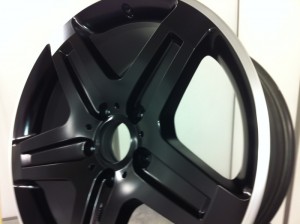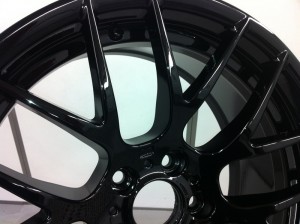Knowing a little bit more about your wheels and rims will certainly help you to respect the round objects at the four corners of your car.
Wheels and rims are not all created equal. Learning about these differences is interesting. You will also be able to appreciate that whilst you may have made a large investment to purchase new alloy wheels at the outset, refurbishing these vital items is the best thing you can do for your alloys.
A wheel is the collective noun for a hub, some spokes and a rim. The hub is at the centre of the set-up and keeps the wheel on the suspension of the car. Spokes radiate out from the hub and attach to the rim, which is at the outer edge, and attaches to the tyres. Wheels can be manufactured a number of ways.
The most common manufacturing method is one-piece cast wheels. That means that during casting, molten aluminum is put inside a single mold to yield a wheel. Simple-sounding, it is really an art. You don’t want to have to go through this again and so refurbishing your existing alloy wheels once cast is always the best plan. 
Gravity casting is the most straightforward process, using gravity to ensure the molten metal fills the mold. Its costs are reasonable, and it works well when visual impact, rather than weight is the goal. Since gravity-fed aluminum is the input to this process, the metal may not get as densely-packed and the wheels will have a higher weight to achieve the required strength.
Low pressure casting on the other hand pushes the molten aluminum into the mold quicker and to achieve a denser final product. It costs slightly more but with the enhanced quality is often what manufacturers fit as standard to their production vehicles. A development on this is a slightly higher pressure in special casting equipment to create a wheel that is lighter and stronger than a wheel produced in low pressure. Lighter in weight and higher in quality, it is also produced at a higher cost.
A spun rim is one that takes shape after a low pressure type of casting which is then spun, heated and rolled to its final width and shape. It has strength similar to a forged wheel without the high cost.
A forged wheel is the ultimate in one-piece wheels. Solid aluminum is forced under the forging dies under extreme pressure. It can end up being very dense, very light, and very expensive.
Knowing how your wheels were breathed into life can add much to your appreciation for their care and eventual refurbishment.


 Follow
Follow